During the '70s there were 1,000 Minuteman ICBM missile silos in the
U.S. The name 'Minuteman' was chosen because they could launch in
as little a a minute after the launch command was input. At that time I
was stationed at Whiteman Air Force Base, Knob Noster, Missouri, as an
ICBM Minuteman II Flight Commander. The following photos are of a
typical Launch Control Center (LCC) located at Whiteman.
There were three missile squadrons at Whiteman, the 508th Strategic
Missile Squadron, the 509th Strategic Missile Squadron, and the 510th
Strategic Missile Squadron. Each squadron had control
responsibility for 50 ICBM missiles with atomic warheads. Each
missile squadron contained five LCCs with prime responsibility for ten
missiles each. The LCCs and the missiles were spread over a wide
area of the Missouri countryside and some missile crews had to drive as
far as ninety miles to their LCC. Whiteman is now a B2 stealth
bomber base and all missile sites have been deactivated. However,
there is still one LCC open for visitors, Oscar LLC, located on the
base itself.
At ground level above each LLC was a Launch Control
Support Building (LCSB)with military police on duty. The LCCS
were located underground and were accessed by an elevator in the
LCSB. At the bottom of the elevator was a Launch Control
Equipment Building (LCEB) containing an emergency diesel generator as
well as food supplies and various other items. The Launch Control
Center (LLC) was a separate structure shaped like a medicine capsule
and constructed of reinforced concrete with a entry blast door
approximately three feet thick. The LCCS were
designed to withstand anything other than a direct hit by a nuclear
weapon.
Of the 1000 Minuteman missiles, six were ERCS
(Emergency Rocket Communication System) missiles. Rather than
warheads, these ERCS missiles were topped with radio
transmitters. In case of war, ERCS crews on duty would record the
go-to-war message from SAC (Strategic Air Command) headquarters onto
two ERCS missiles which were then launched east over the Atlantic and
west over the Pacific. During an atomic war, many forms of
communication would likely be interrupted. The ERCS missiles were
intended to ensure that our ships at sea, especially submarines armed
with nuclear missile, received the launch message in a timely
manner. In 1971, my deputy, 2nd Lieutenant Jerry Vanlear, and I
launched one such ICBM at Vandenberg AFB,California. I recorded a test
message and then launched the ICBM out over the Pacific. A minute
or so later we heard my voice over the launch center radio transmitting
the message I had recorded.
If a launch command were given by SAC Headquarters
as directed by the president, the crews on duty would verify the
message by removing their locks from the small safe in the LCC and then
breaking open the coded verification documents in the safe. They would
also removing the two launch keys in the safe. The crews in each
squadron would conference by phone and initiate the launch
process. Depending on the contents of the launch message, crews
would enter targeting information into their computers. The launch keys
would be inserted and at the proper time all crew members in the
squadron would turn keys simultaneously. In an actual war, one or
more of the LCCs might be destroyed before launch time, thus the system
only required a minimum of two LCCs to start the launch process.
If the LCCs had been destroyed by incoming warheads all ICBMS in the
squadron could still by launched by personnel on SAC aircraft that were
flying twenty-fours hours each day for that purpose.
At the time I was assigned to missile duty at
Whiteman AFB, it was the custom to allow individuals or groups to
visit any LCC or LCCs in a missile wing. Visitors were not
searched nor subject to any security measures other than having to
obtain a trip number prior to visiting the LCCs. This was during
the time period when terrorists had killed many Israeli athletes during
the 1972 Olympics. I discussed the visitor procedures with
my squadron commander, pointing out that it only took launch commands
from two of the five LLCs in a squadron to launch that squadron's
missiles, and that it would be quite easy for terrorists to conduct
visits to two LCCs in a squadron and then take over the LCCs and launch
50 nuclear missiles resulting in a nuclear war. In fact, it had
been nothing but sheer dumb luck that such an event had not already
taken place. My commander agreed and asked my to inform
Headquarters Strategic Air Command (SAC) of the situation. I
spoke to a colonel at SAC who became quite excited when I informed him
of how easy it would be to put the U.S. in such an untenable
situation. He said he would call me back on the matter and he did
so several hours later. He no longer seemed excited or upset at
the possible prospect of an imminent nuclear war and asked me to submit
an emergency classified change to the regulation limiting visitor trips
to no more than one LCC in a squadron at any one time throughout SAC,
which I did. After the regulation change was made, I submitted an
after-the-fact suggestion through the base suggestion program outlining
the extreme danger we had been in and that it was only by great good
luck that the wrong persons had not become aware of the situation and
taken advantage of it. Sometime later I received notice that the
suggestion had been adopted by SAC and I was given an award of ----
$50. The award letter stated that the suggestion had provided
"moderate and extended benefits." I spoke to the little old lady
in tennis shoes in the suggestion office at SAC who had approved the
award and she told that it was worth no more than $50 because it only
affected six SAC bases!
Several years later I happened to be working in the
same organization with an officer who had been at SAC Headquarters when
my call was received. He told me that the apparent calm of the
colonel who had called me back was just that, apparent. He said
that my call had turned SAC headquarters upside down and that they were
frantic to devise a method whereby the possibility of such a
catastrophic event taking place could be positively eliminated.
Merely depending on bases strictly adhering to the changed LCC visitor
regulation would not be sufficient. Changes were made to
procedures and LCC equipment whereby the crew would receive coded
information in a launch message which had then to be inserted into LCC
equipment before the missiles would respond to launch commands.
That change absolutely prevented unauthorized launch of missiles by
anyone, including LCC crews.

Above is a diagram of a typical Launch Control Facility. All
personnel enter through the building shown in the upper center. Crew
members would go down the elevator shaft shown in the center of
the diagram to the LCC. On the lower right is shown the Launch
Control Equipment Building (LCEB) which contained an emergency
generator, food supplies, and other miscellaneous items. The LCC
is shown in the lower center of the diagram and was shaped like a
medicine capsule.
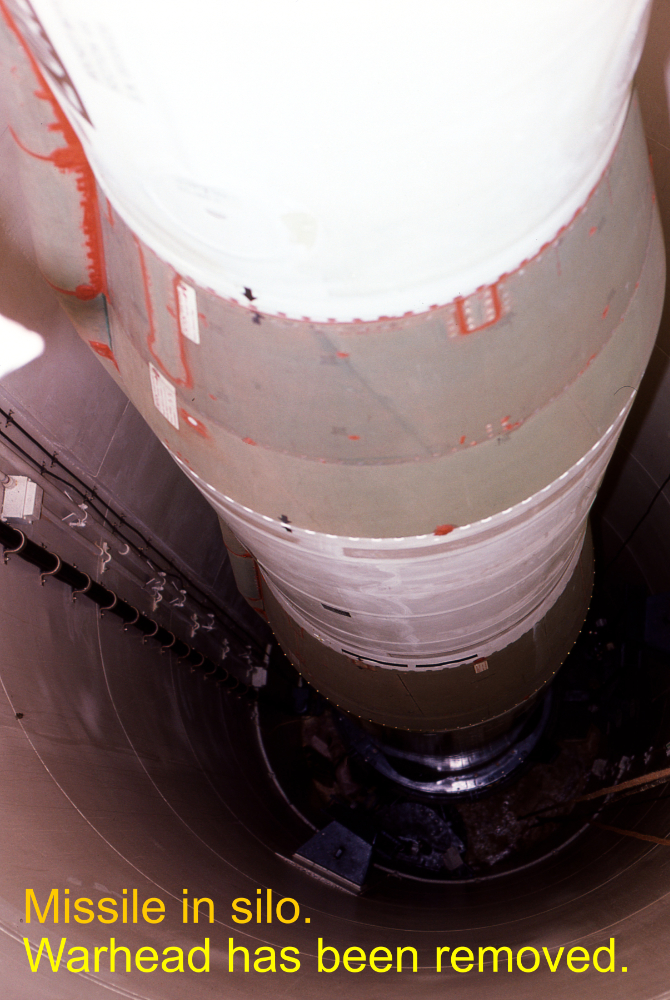
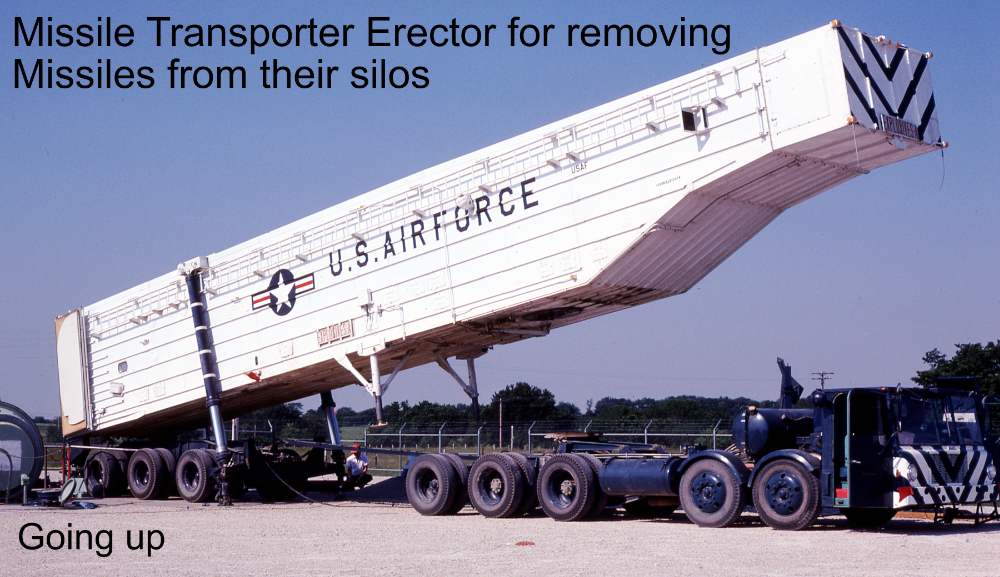

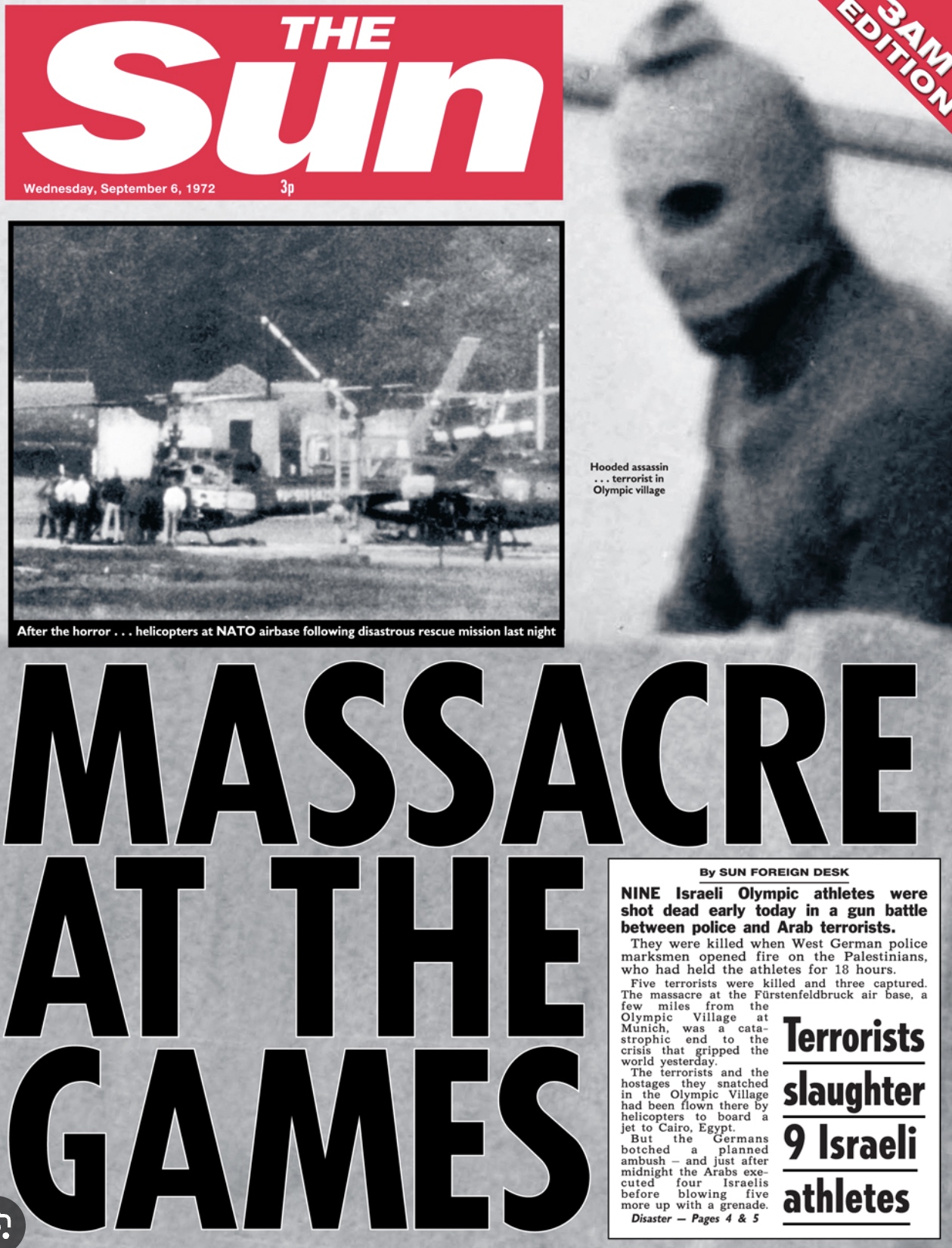
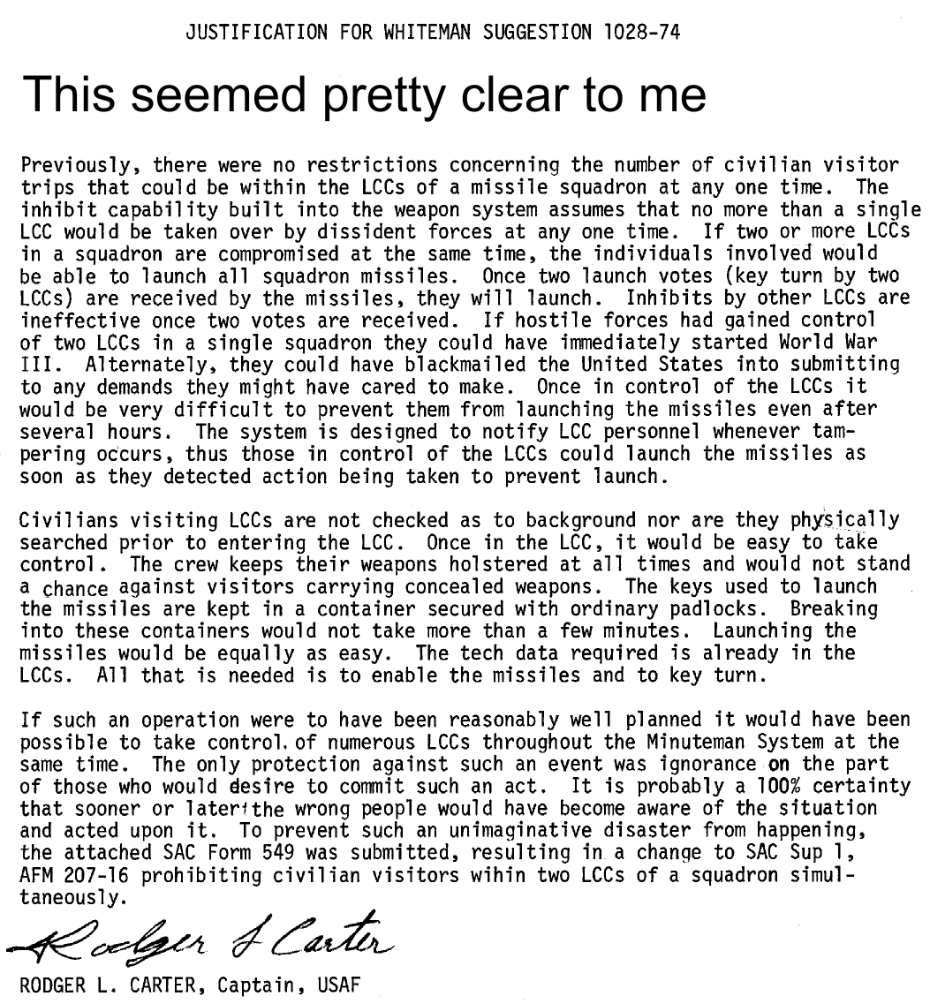
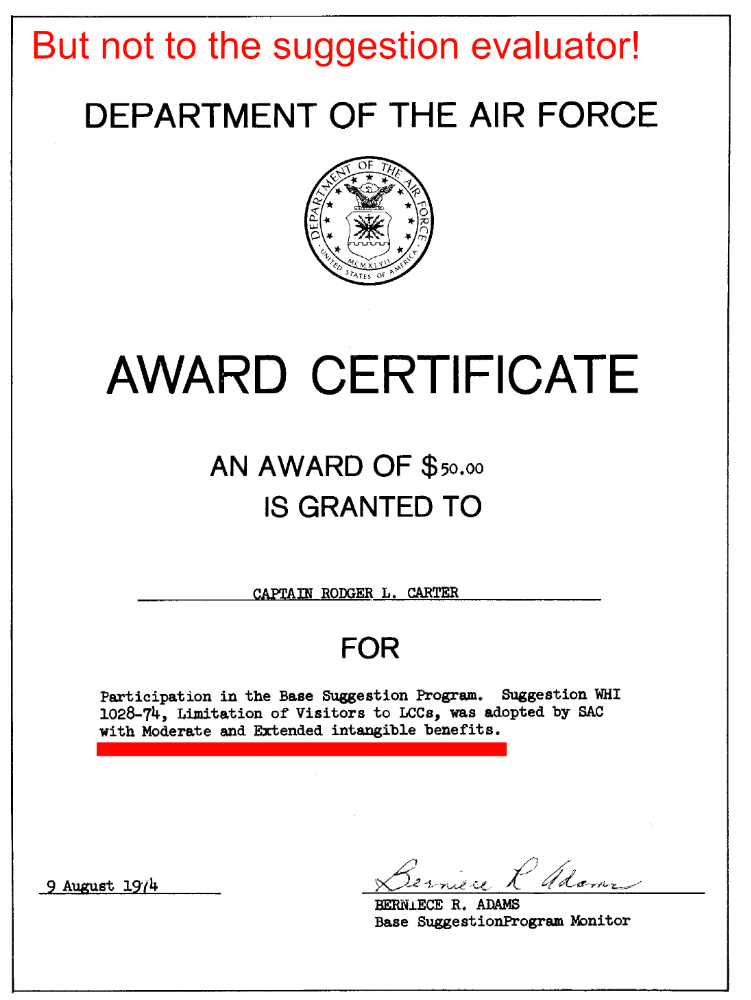
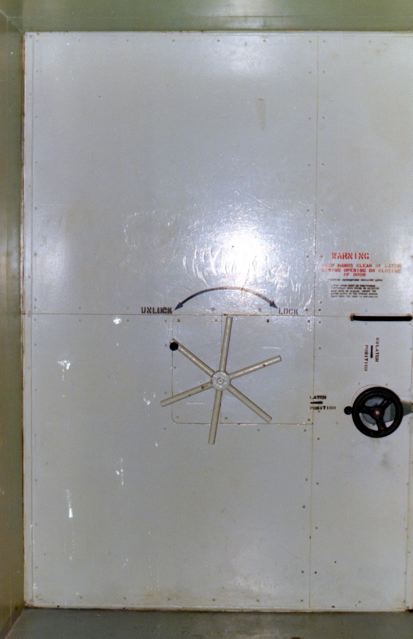
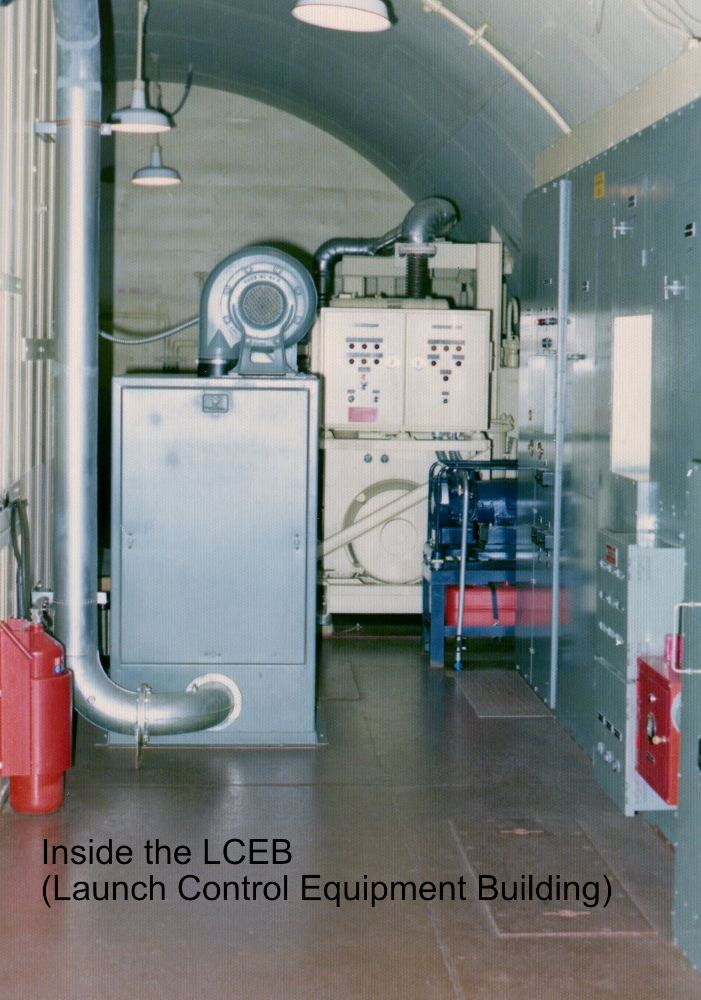
Blast door entrance to the Launch Control Equipment
Building. Inside
the LCEB
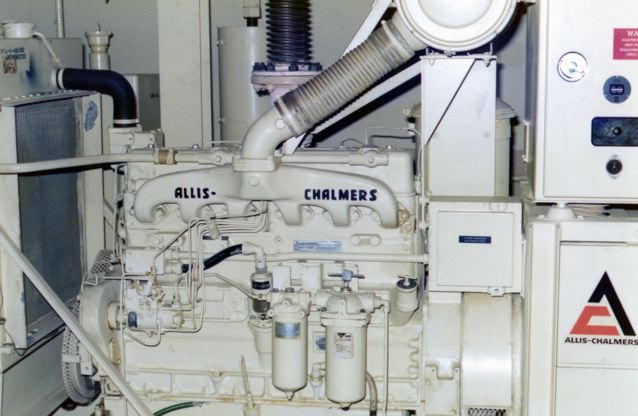
Emergency generator.
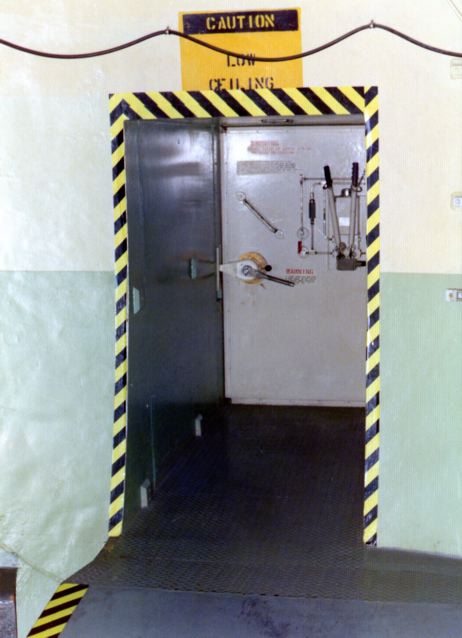
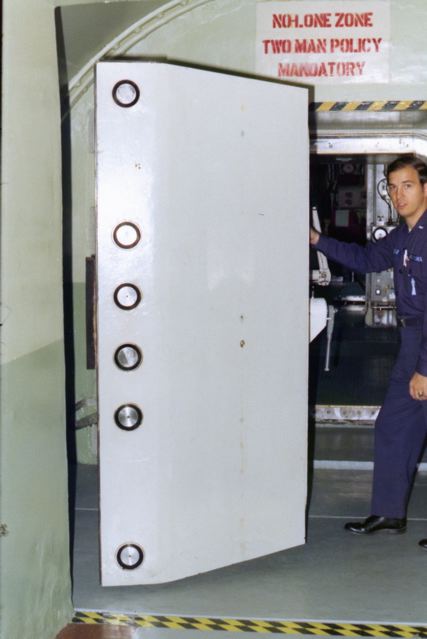
Launch Control Center blast door. It would take the bad guys quite a while to work their way through that door.
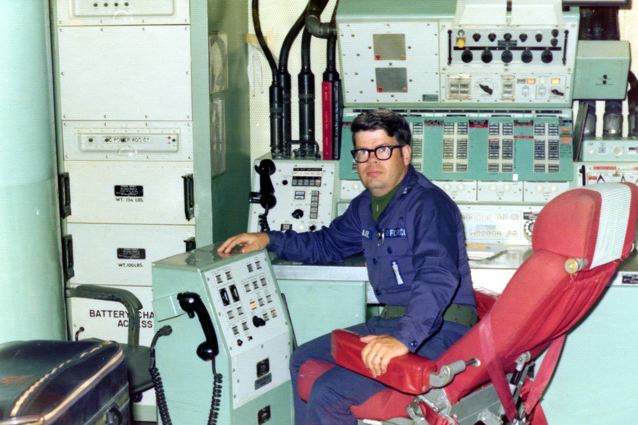
LCC Commander'swork station
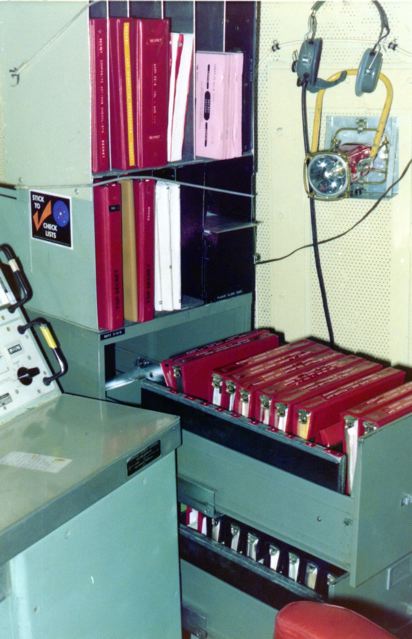
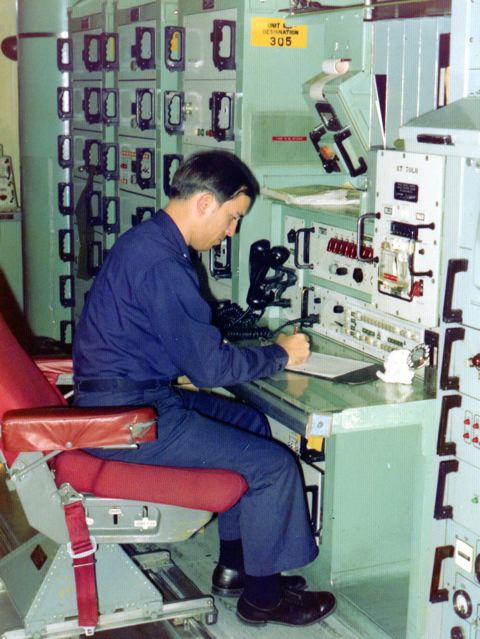
Manuals
and
Regulations
Deputy Work Station
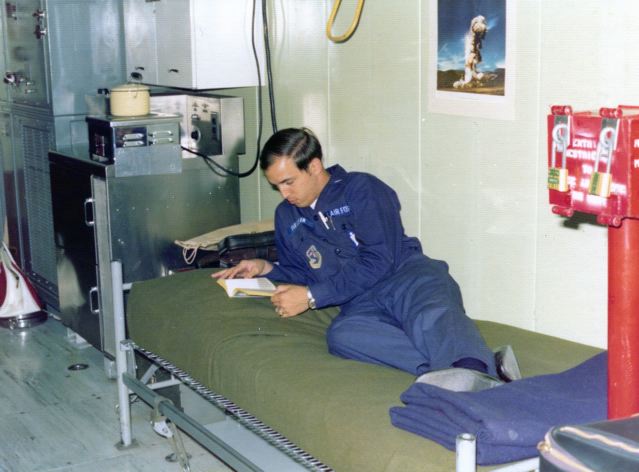
Deputy LCC Crew Commander pursuing intellectual studies (maybe).
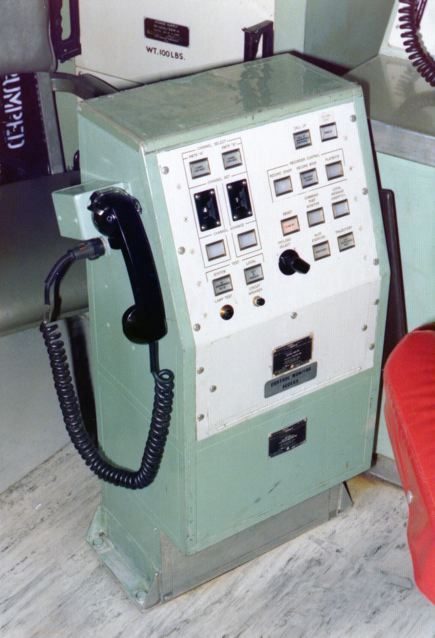
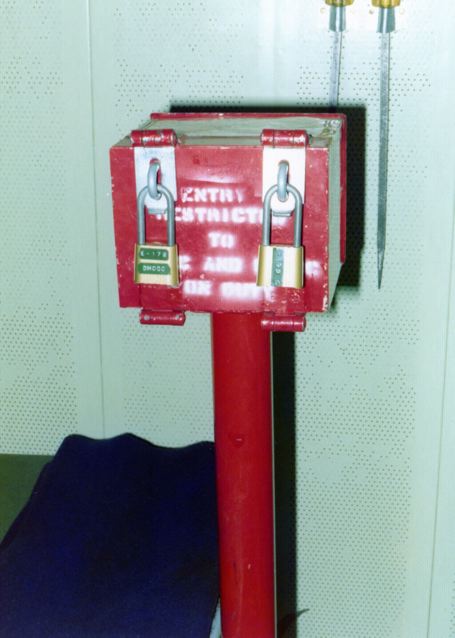
The photo on the left is of what was unaffectionately known as the knee
knocker. It was used to record a copy of the go to war
message on six ERCS (Emergency Rocket Communication System) missiles
located only in the 510th Strategic
Missile Squadron at Whiteman AFB. Those six missiles did not have
atomic warheads, but instead radio transmitters used to broadcast the
war message out over the western U.S. and the Pacific Ocean, and
eastward out over the Atlantic Ocean. Such transmissions might be
especially important to submarines and ships because nuclear blasts can
disrupt normal communications. I and my deputy, Lt. Jerry
VanLear, Launched an ERCS missile from Vandenberg AFB in
March of 1972. It worked fine, the message I had recorded
on the knee knocker began broadcasting a minute or so after launch.
The photo on the right is the safe
where the launch keys were kept as well as the documents used to
authenticate a launch message.
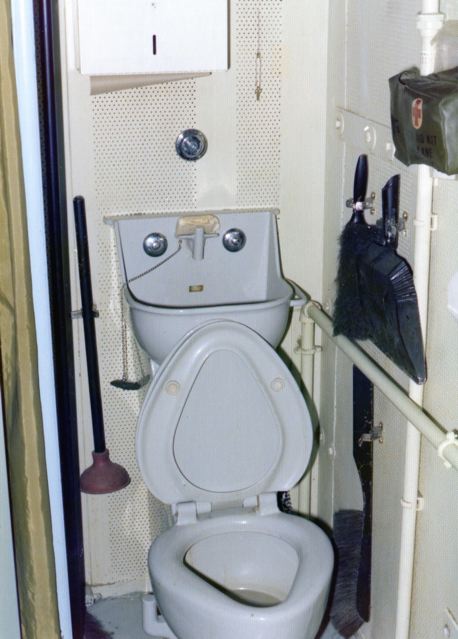
This last piece of equipment is highly classified, so I am not allowed
to describe its function to you, but be sure it was very
imporatant to the war effort (and some other efforts too).


















